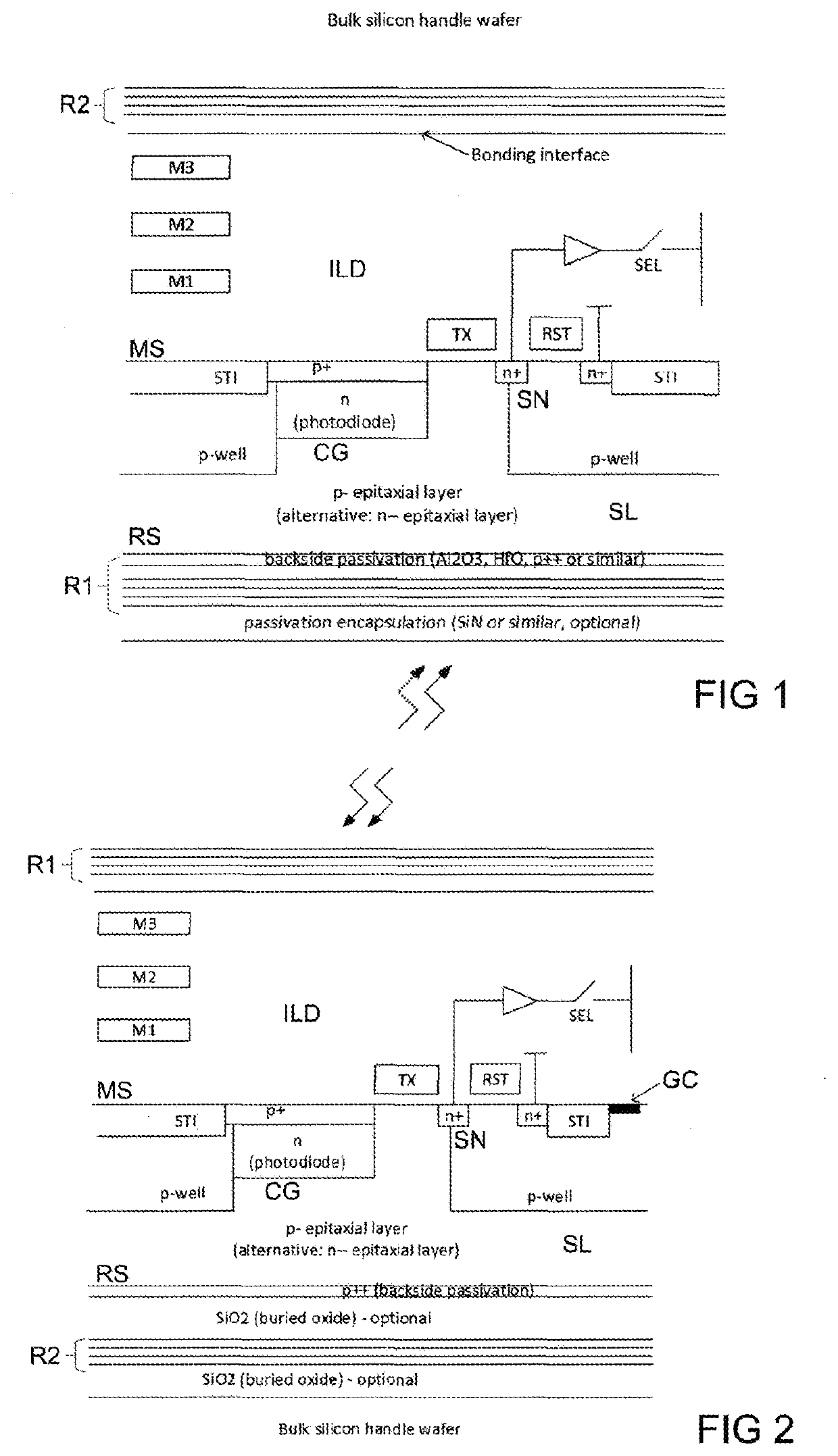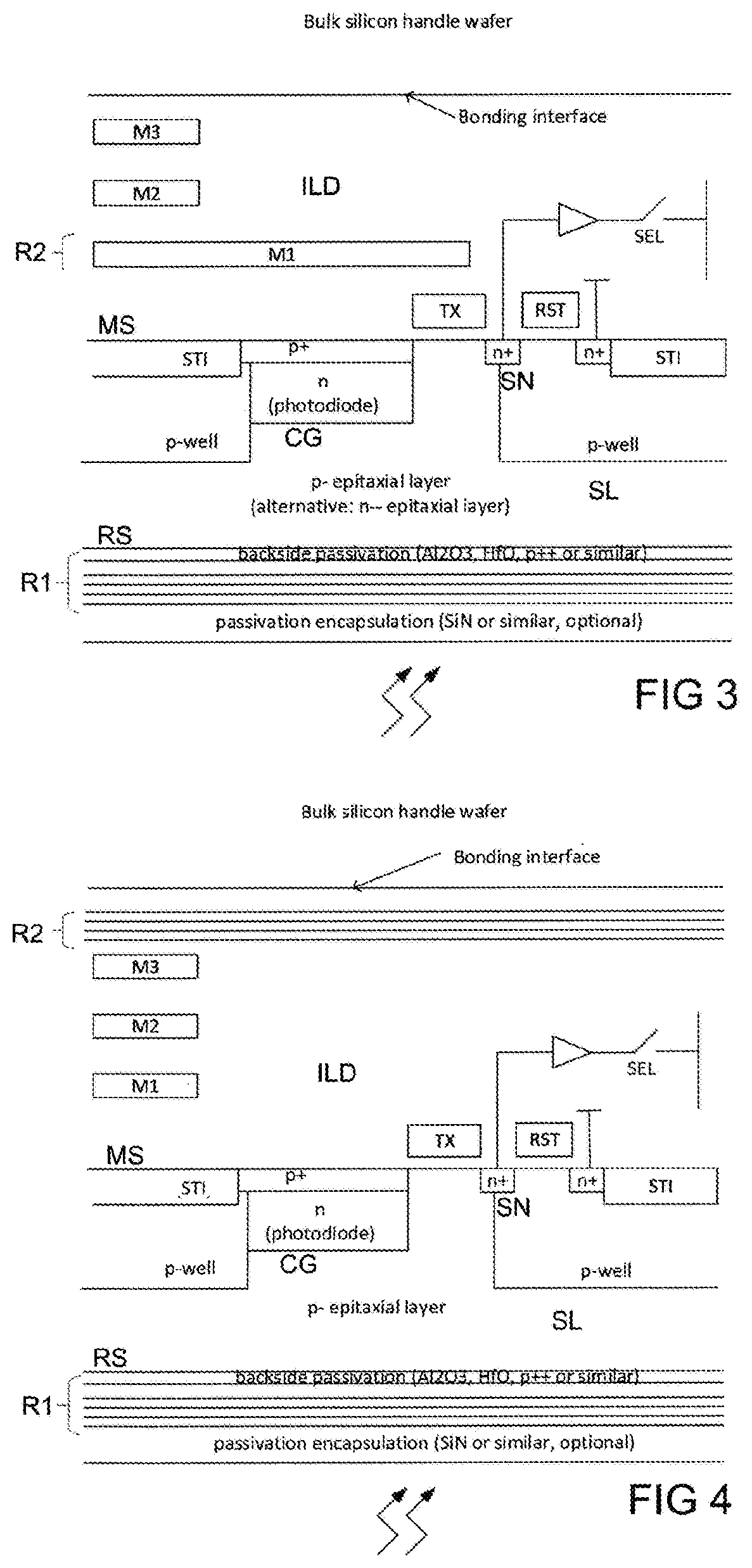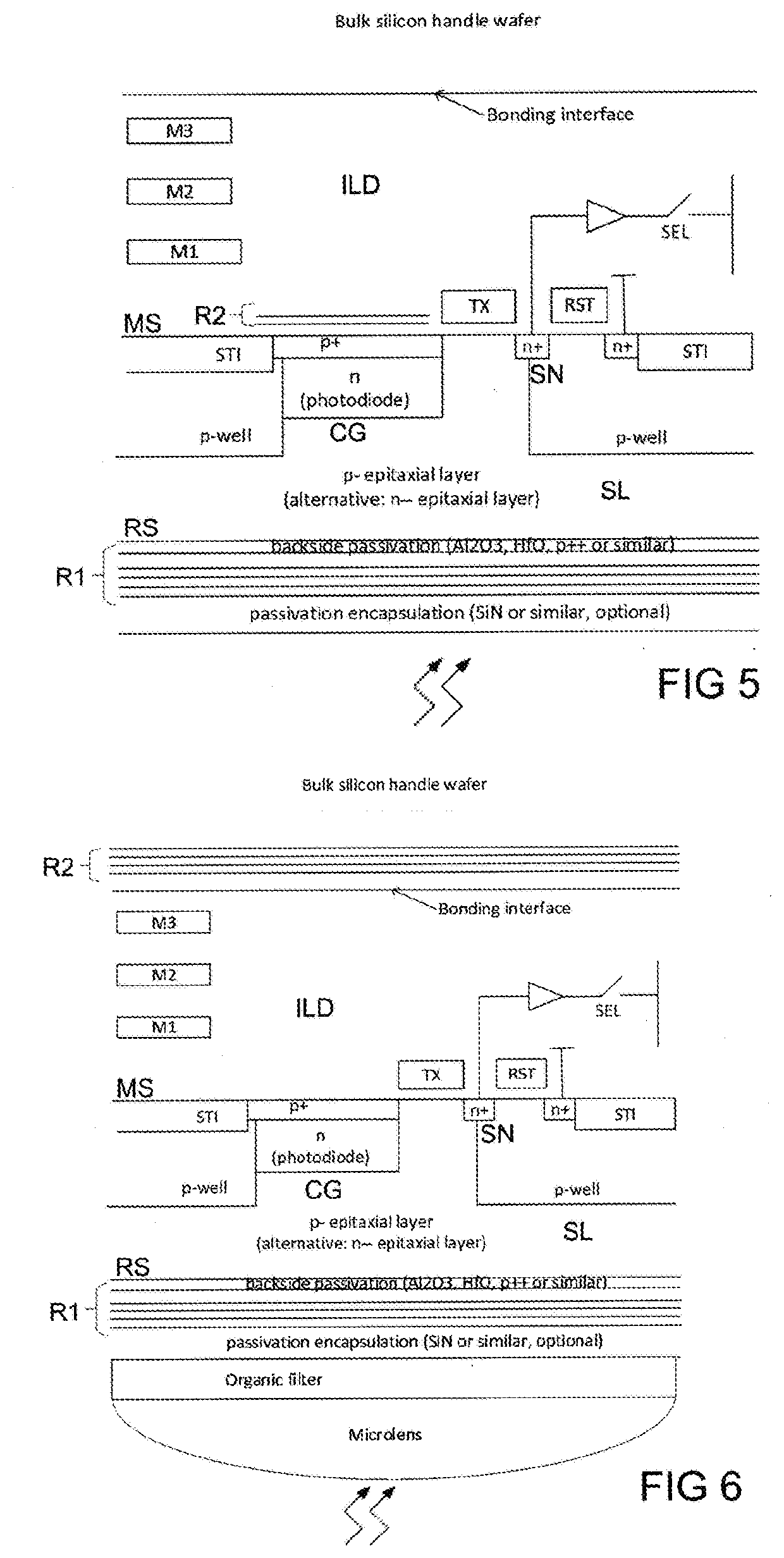Resonant cavity enhanced image sensor
a resonance cavity and image sensor technology, applied in the field of image sensors, can solve the problems of limiting the sharpness of the image, difficult to detect near infrared light with silicon photodiodes, and inability to thicken the detector layer, so as to reduce the depth of the region and high quantum efficiency
- Summary
- Abstract
- Description
- Claims
- Application Information
AI Technical Summary
Benefits of technology
Problems solved by technology
Method used
Image
Examples
Embodiment Construction
[0045]In the following description, the charge carrier generating component CG is represented by a photodiode, by way of example. The charge carriers may be transferred to a sense node SN through a transfer gate TX.
[0046]FIG. 1 shows a back-illuminated image sensor, which may be a CMOS image sensor. Light enters from the rear side RS of the semiconductor layer SL, which may be silicon, for instance. The semiconductor layer SL may especially be an epitaxial layer of p-type or n-type conductivity. The reflecting layers R1, R2 are arranged above the rear side RS as a top mirror or top reflecting layer R1 and above the active part of the image sensor, which is represented by a photodiode, as a bottom mirror or bottom reflecting layer R2. The reflecting layers R1, R2 form opposite boundaries of a resonant cavity. The distance between the reflecting layers R1, R2 is tuned to obtain a desired resonance. The reflectance may typically be tuned to 940 nm, for example.
[0047]Inside the cavity t...
PUM
| Property | Measurement | Unit |
|---|---|---|
| wavelength | aaaaa | aaaaa |
| absorption depth | aaaaa | aaaaa |
| absorption depth | aaaaa | aaaaa |
Abstract
Description
Claims
Application Information
 Login to View More
Login to View More - R&D
- Intellectual Property
- Life Sciences
- Materials
- Tech Scout
- Unparalleled Data Quality
- Higher Quality Content
- 60% Fewer Hallucinations
Browse by: Latest US Patents, China's latest patents, Technical Efficacy Thesaurus, Application Domain, Technology Topic, Popular Technical Reports.
© 2025 PatSnap. All rights reserved.Legal|Privacy policy|Modern Slavery Act Transparency Statement|Sitemap|About US| Contact US: help@patsnap.com



